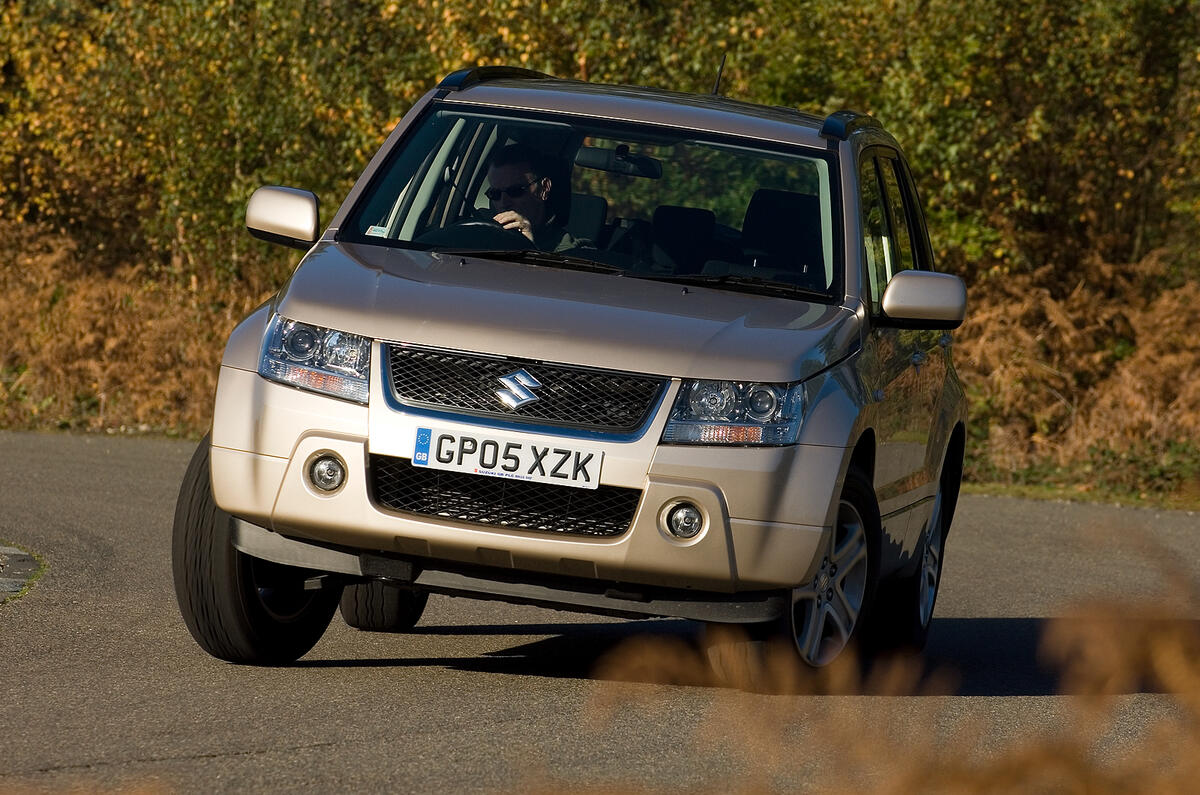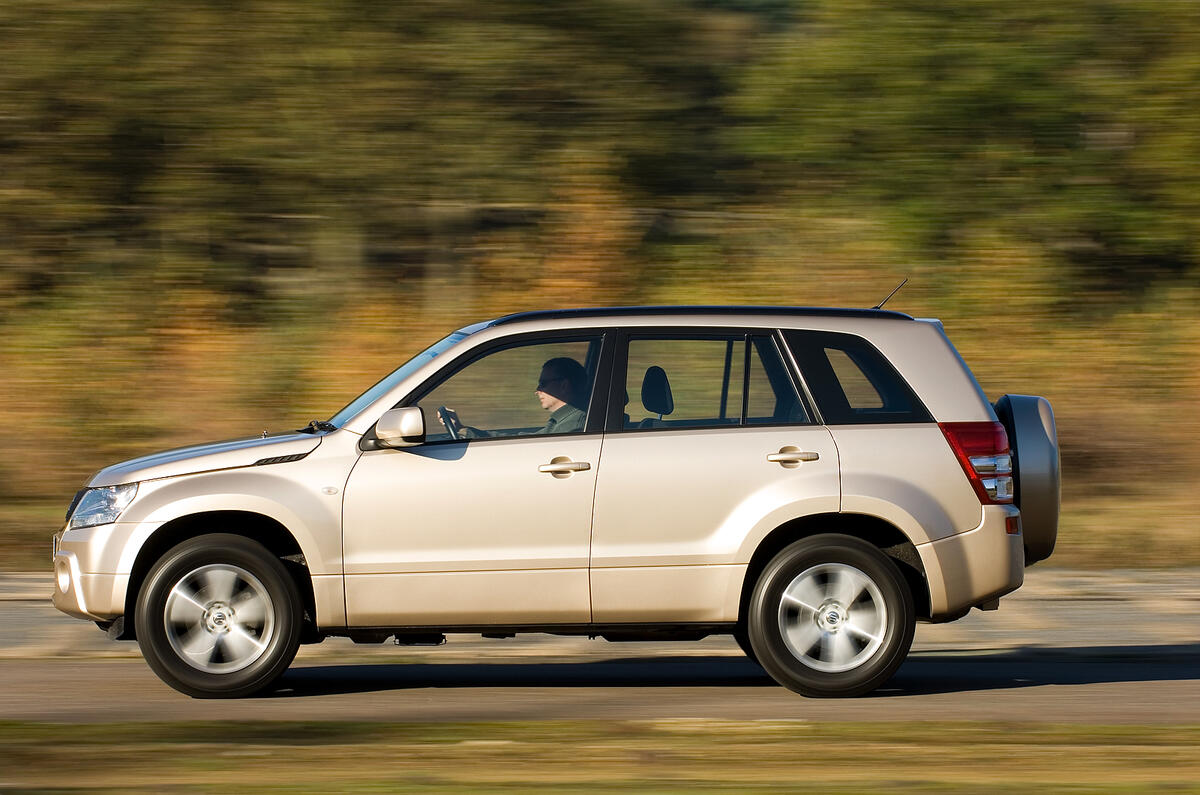As an example of that diminishing breed, a 'proper' 4x4, the Suzuki Grand Vitara gets a low-ratio transfer ’box and locking differentials for its permanent four-wheel drive. But the 2.0-litre petrol engine that feeds them, and is tested here, is not the Grand Vitara’s strongest point. It’s reasonably brisk, posting a 0-60mph time of 10.8sec, and quiet enough at idle, but over 3500rpm it becomes vocal and is increasingly intrusive towards the 6600rpm red line.
Fortunately, it’s at lower revs that it seems to do its best work, as our in-gear figures show: it covers 20-40mph in third just as quickly as it covers 40-60mph. And despite developing peak power at 6000rpm, there’s actually very little point in taking it past 5000rpm unless you’re a noise fetishist. At a motorway cruise of 70mph or so noise levels are respectable, but up the speed and the engine becomes intrusive. Engine aside, and remember here that current versions have grown to 2.4 litres and 166bhp, the Grand Vitara’s mechanical refinement is reasonable.
The gearshift has a long but accurate throw, and if you change gears slowly and deliberately it is not unpleasant to use. However, there’s some driveline shunt at low speeds and, if you attempt swifter gearchanges, it can baulk. A four-speed automatic gearbox is available but best avoided: the shifts are slow and jerky, and the ratios are so far apart that the engine is frequently either out of its powerband or in a raucous kick-down. On both manual and auto versions there is some transmission whine at low speed. It recedes once you’ve moved through the gears, although engine noise (subsequently accompanied by wind noise and tyre roar) then takes over.






























